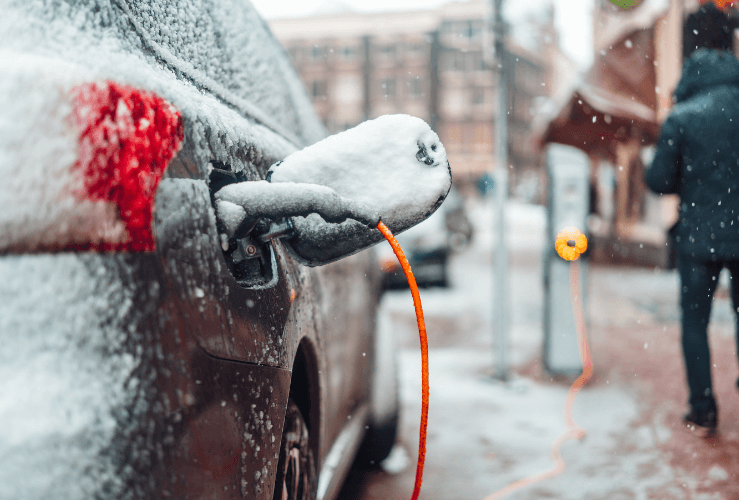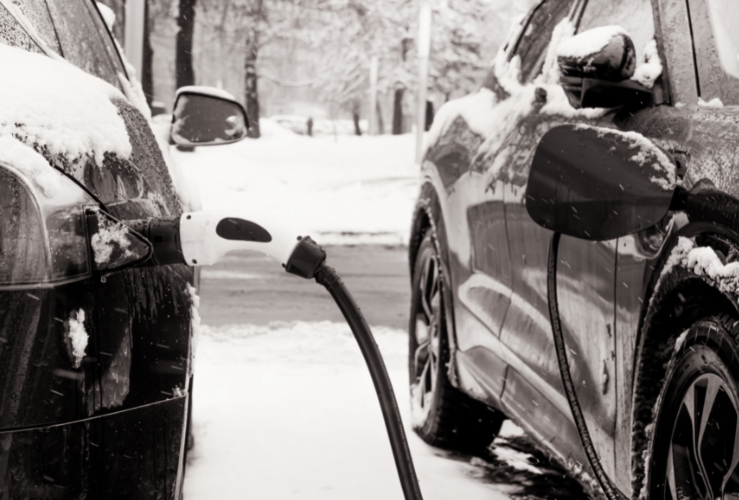EV range can drop dramatically in colder temperatures - and not just because battery capacity falls...
EVs are often touted as a panacea for all the issues caused by the combustion engine - most notably that they're cheaper to run, cost less to maintain, and are less damaging for the environment.
However, EVs are not perfect - especially when temperatures plummet.

According to data from the American Automobile Association, if temperatures drop dramatically from 23 to -6 degrees Celsius, battery capacity could be slashed by up to 40%.
Why are EV batteries not as effective in cold weather?
Most of this is due to the fact lithium ion batteries do not hold charge as well in lower temperatures.
Lithium ions in the cell must move from the anode to the cathode, a process that is much slower in colder temperatures.
But there are other factors, too: cabin heating, heated steering wheels and seats also increase battery drain.
Winter range is even lower with older EVs
A big fall in temperature is bad news even if your EV is brand new, but the situation is even less desirable if your electric car is on the older side.
It's estimated that battery range drops more than 2% annually, so while a brand new 250-mile range EV could see its range fall to 150 miles in mid-winter, a 10-year old EV with similar specs might only manage 100 miles.
Poorer storage and release
When temperatures drop, EV batteries struggle to keep and release energy. This is partly because some energy is needed to keep the battery warm.
It’s a good idea to start your vehicle while it is still plugged in; this way you're drawing power from the grid rather than from the cell.
Prewarming - or preconditioning - is necessary for charging to take place at a decent rate. Without prewarming, charging can be significantly slower.
Plan for your next EV charge in the cold
While it’s always important to know where you will get your next charge for your electric vehicle, this is even more important in low temperatures.
Use charge station maps like ZapMap to see charge points along your desired route.
Most EVs reserve 15-20% of their capacity. This is the minimum amount needed for the vehicle to heat the battery by itself.
Some models may shut off certain battery-draining features in lower temperatures, in order to maintain as much range as possible.

Get the cabin toasty while still plugged in
EV motors don’t produce warmth the way combustion engines do, so they rely on their batteries to power the heating systems.
Since heating is such a huge drain on the cell, it’s a good idea to pre-heat the cabin while you're still plugged in.
Some EVs even allow you to schedule preheating using an app, so you don’t need to think about it (assuming to run on the same schedule each day).
Special winter driving features
Many modern EVs boast special features designed to mitigate the effects of winter driving - so take some time to read your owner's manual.
For example, some EVs feature heat pumps which can be used to pre-warm the cabin in a more efficient way than a regular heating system.
Other Eco modes limit power consumption and encourage the driver to adopt an energy saving driving style (less hard braking and sudden acceleration, for example).
Such features will enable you to get through winter without - hopefully - ever getting stranded by the roadside with a dead battery.
Breakdown cover for EV's
At Start Rescue we offer breakdown cover for EV's so if you have run out of battery charge we will take you to the closest working charging point to get you back on the road in no time!
Get an instant quote online for electric vehicle breakdown cover.




